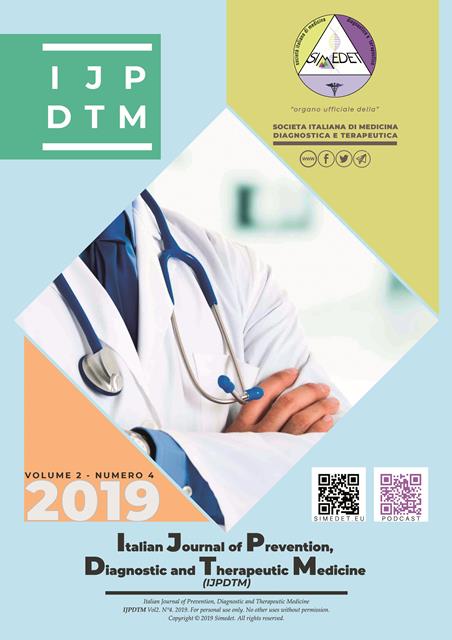SafeCapsule pathological Anatomy Innovation for Chemical & Clinical Risk Management in Healthcare Facilities
Main Article Content
Abstract
Formaldehyde, as main fixative of choice in medical services, was reclassified as cancerous and mutagen by European Directive N. 895/2014.
Suitable substitutes to formaldehyde do not exist at the time, so industry has proposed a set of closed-circuit safety devices pre-filled with formalin. These devices have shown a lot of technical failure, so the University Campus Bio-medico in collaboration with Diapath company have developed “SafeCapsule”, in order to promote an effective management of formalin use in compliance with safety measures and directives. SafeCapsule (patent pending) is composed by a blue screwcap container pre-filled with buffer solution and a safety red capsule pre-filled with concentrate fixative solution.
The aim of the work is to evaluate all intrinsic SafeCapsule features into the normal work routine.
For operators of medical services, SafeCapsule is ergonomic, very handy, safe and easy to use. All lab tests have shown:
- intact cell morphology and cell features staining;
- accessibility of nuclear, cytoplasmic and membrane antigens;
- unaltered probe’s specificity on DNA sites investigated (as ALK e ROS1 rearrangements, HER2 amplification) in FISH tests;
- good results in molecular investigations (EGFR mutations).
In conclusion SafeCapsule enables the great fixation of biological samples for right histological examinations; the elimination of chemical and clinical risk into the work place and the overcoming of technical failure of conventional devices.
Downloads
Article Details

This work is licensed under a Creative Commons Attribution-NonCommercial-NoDerivatives 4.0 International License.
References
- Regolamento (UE) N. 605/2014 della Commissione Europea del 5 giugno 2014 recante modifica, ai fini dell’introduzione di indicazioni di pericolo e consigli di prudenza (…) del regolamento europeo n. 1272/2008 del Parlamento europeo e del Consiglio relativo alla classificazione, all’etichettatura e all’imballaggio delle sostanze e delle miscele.
- Ministero della Salute – Consiglio Superiore di Sanità Sezione I : Linee Guida Tracciabilità, Raccolta, Trasporto, Conservazione e Archiviazione di cellule e tessuti per indagini diagnostiche di Anatomia Patologica.
- Note relative all’utilizzo della formalima, ri-classigicata “cancerogena” - Linee di indirizzo SIAPEC-IAP Divisione Italiana (Febbraio 2016)
- Donczo B, Guttman A. Biomedical analysis of formalin-fixed, paraffin-embedded tissue samples: The Holy Grail for molecular diagnostics. J Pharm Biomed Anal. 2018 Jun 5;155:125-134. doi: 10.1016/j.jpba.2018.03.065. Epub 2018 Apr 2. Review. PubMed PMID: 29627729.
- Barbareschi M, Barberis M, Buttitta F, Doglioni C, Fiorentino M, Fontanini G, Franco R, Marchetti A, Rossi G, Troncone G. Predictive markers in lung cancer: a few hints for the practicing pathologist. Pathologica. 2018 Mar;110(1):29-38. Review. PubMed PMID: 30259911.
- Harbeck N, Gnant M. Breast cancer. Lancet. 2017 Mar 18;389(10074):1134-1150. doi: 10.1016/S0140-6736(16)31891-8. Epub 2016 Nov 17. Review. PubMed PMID:27865536.
- Fairley JA, Gilmour K, Walsh K. Making the most of pathological specimens: molecular diagnosis in formalin-fixed, paraffin embedded tissue. Curr Drug Targets. 2012 Nov;13(12):1475-87. Review. PubMed PMID: 22974391.

